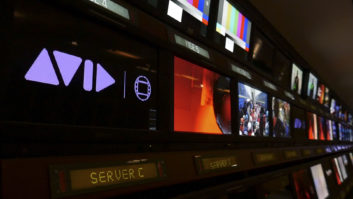The broadcast industry’s rapid adoption of cloud-based media production workflows for remote working and collaboration during the Covid-19 pandemic has led to the proliferation of higher costs and inefficient workflows, according to a new report by analysts Caretta Research.
The report, produced in conjunction with Blackbird, also finds that the rush to cloud and remote working has too often been tactical, involving the lift-and-shift of legacy tools and workflows.
It adds that while this move is enabling short-term operational benefits, it has frequently led to media operations missing out on the “true potential” of cloud-enabled live and post production.
The report highlights key areas of increased cost and inefficiencies from lift-and-shift cloud, including:
- Higher infrastructure costs where static cloud compute instances are used rather than elastic cloud-native services.
- Inflated cloud storage costs where storage tiers are used inefficiently or content is duplicated across workflows.
- Excessive cloud egress bandwidth charges where content is repeatedly transferred in and out of the cloud.
However, the report does find positives in a new generation of flexible and collaborative cloud-native technology, with camera-to-cloud workflows bringing tools and creative users to the content rather than requiring the content to be moved around to the users.
Robert Ambrose, Caretta Research’s co-founder and managing director, who conducted the research said: “It’s clear from our extensive conversations with production operations and technology leaders that we’re at the start of the next big transition: from remote lift-and-shift cloud production to cloud-native production.
“We expect to see more and more content going directly from cameras to the cloud, and both live and post production happening there. That not only creates efficiencies, but it’s an imperative for handling fast-turnaround content efficiently for multiple platforms.”
The full report is available to download here.







